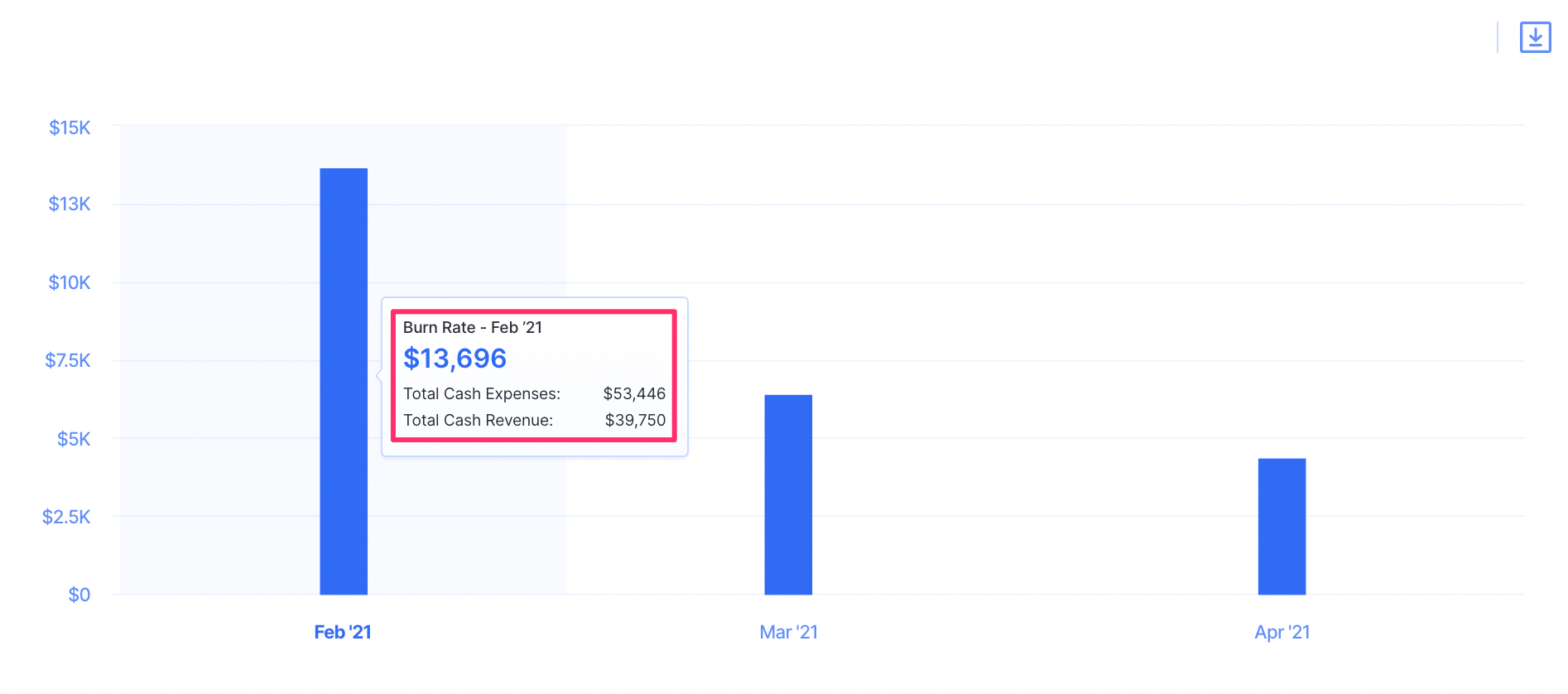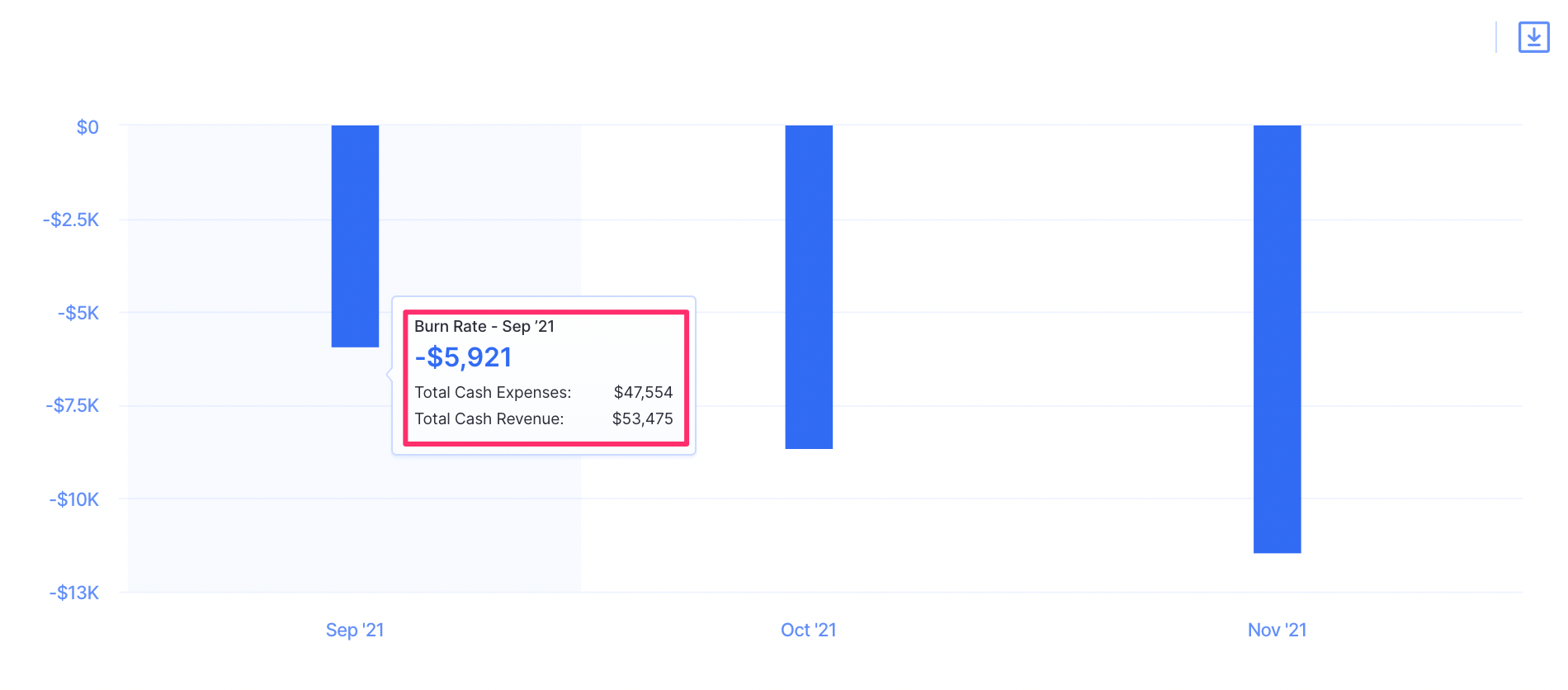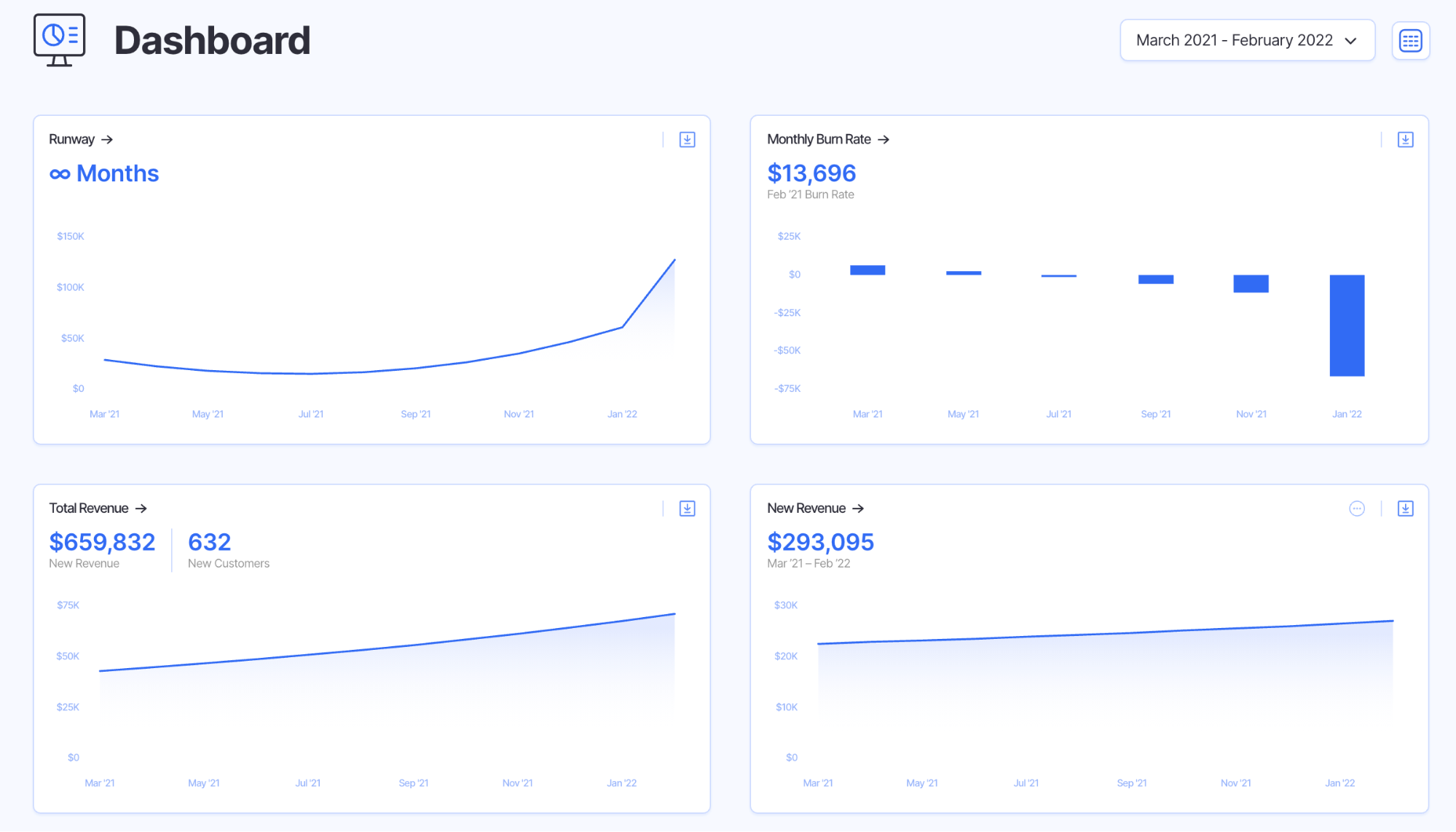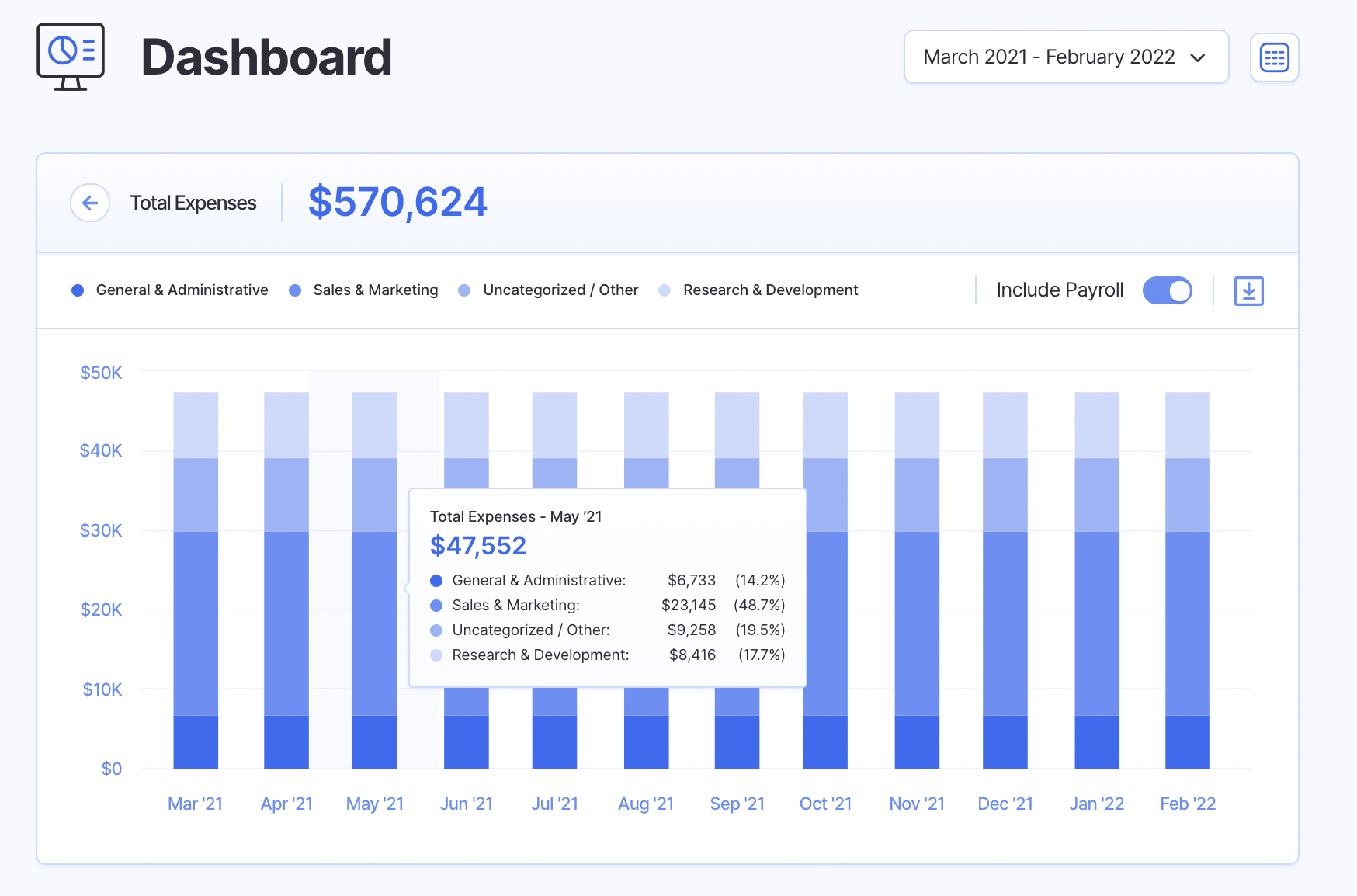Burn Rate
If you’ve heard the phrase “burning cash,” then you likely already understand what burn rate means.
If your company is burning cash, then you are spending more money than you are taking in. Similarly, your company’s burn rate is how much money your business is spending per month (revenue-expenses).
Read on to learn how to calculate burn rate, burn rate benchmarks, and more.
What is Burn Rate?
Burn rate is defined as the negative free cash flow (FCF) during the month. You can calculate this during a specific month, or average out over a longer time period, like three months or one year.
Burn rate is used when calculating cash runway — the number of months until cash runs out. To calculate runway, we recommend taking the average burn rate over the last three months and applying it to your cash balance.
For example, if your company has a burn rate of $10,000 then that means you are spending approximately $10,000 per month in excess of your revenues.
Some companies like to differentiate between gross and net burn rate. While we suggest tracking net burn rate (it’s alway what we report on in Finmark), it’s worth noting the difference between the two.
Gross Burn Rate
Gross burn rate is the total amount of cash spent each month, including all money spent on rent, marketing, salaries, and any other operating expenses incurred during the month.
Gross burn rate doesn’t take revenue into account, which is why most companies simply measure net burn rate.
Net Burn Rate
Net burn rate is the difference between cash out and cash in — the total amount of money lost during the month.

Track & Forecast Your Burn Rate in Finmark
So if you are a profitable company, then you have a negative net burn rate due to the fact you are bringing in more money than you are spending.

This is especially important to track when your revenue is down, as a loss in revenue without any change in spending will result in a higher burn rate for that time period.
How to Calculate Burn Rate
To calculate your burn rate, simply subtract your incoming cash from outgoing cash.
Burn Rate Formula
Cash Payments – Cash Collections
Why Burn Rate is Important for Startups
No matter the age of your company, it’s important to track the cash flowing in and out of your business.
This is especially important for startups, as running out of cash is one of the top reasons startups fail.
Also, investors will ask about your burn rate during fundraising meetings, because it gives insights into things like:.
- Are you spending money efficiently?
- How long will it take for your business to become profitable?
- How soon will you need more funding?
Your burn rate will also help you figure out when to fundraise.
A high burn rate or a short runway, without any near-term profit, means you should consider seeking additional funding options to keep your business afloat, or cutting costs to reduce the amount of cash you are spending per month.
What’s a Good Burn Rate?
This can vary from business to business and industry to industry, and shouldn’t be looked at within a vacuum.
While burn rate is an important metric for startups to track, it shouldn’t be the only metric you are tracking when it comes to your business’ financial health. You should look at burn rate as it relates to cash runway, CAC, churn, and overall financial projections.
It will come as no surprise that growth and annual recurring revenue (ARR) make an impact on burn rate, and companies with faster growth and high ARR will have a lower burn rate.
Brex recently took a look at previous Y Combinator cohorts to determine the average burn rate for early-stage startups and found that 100% of these companies had at least a $1,000 burn rate, and almost half of companies (48%) had a burn rate of $18,000+.
This is a clear indicator that burn rate can fluctuate based on the size and age of your company. As an early-stage startup, setting benchmarks and projections for burn rate will only help you to measure and reach your goals more effectively.
A high burn rate before your company launches and starts selling a product is one thing, but once you start generating revenue, a high burn rate without any clear results means something must change, and fast.
How to Improve Your Burn Rate
If you are a pre-revenue startup, you need to consider how much money you are spending to improve your burn rate. This is more than just closing your wallet and not spending money.
As a startup founder, you should review all expenses to see where you can make cuts and determine what is necessary vs. unnecessary to reduce costs and improve your burn rate.
This can include office costs (downsizing office spaces to reduce rent) and contractors (outsourcing work when possible), among others.
For a revenue-generating company, it may not be as easy to determine how to reduce expenses and improve burn rate. This requires a more in-depth understanding of metrics and KPIs across the company, from high-performing marketing campaigns to incurred research and development expenses.
To start, you should review your customer acquisition costs (CAC) to determine how to bring down this cost, if possible, to help offset expenses. Check out more on how to reduce CAC here .
Having an up-to-date, accurate financial model can also provide a snapshot of your burn rate, allowing you to make real-time decisions to cut costs to decrease your overall burn.

Plus you can dive in to see exactly what’s eating away at your expenses and create scenarios to forecast what your growth will look like if you reduce certain expenses (or increase revenue).

Don’t get burned by not keeping track of your burn rate. Finmark can help you keep track of each dollar going in and out of the business to be truly on top of your financials. Get started today.
This content is presented “as is,” and is not intended to provide tax, legal or financial advice. Please consult your advisor with any questions.
